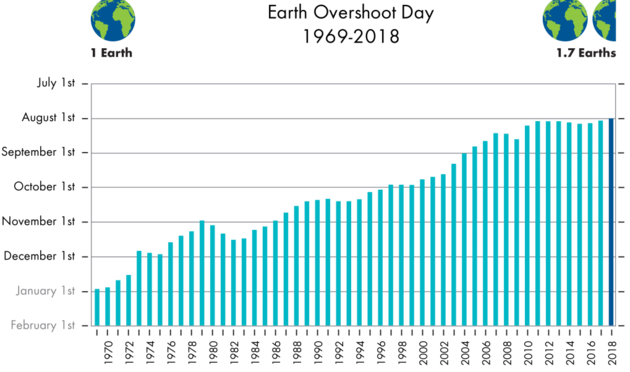Greggs Vegan Sausage roll. Picture: Greggs
Reasons to be Vegans
Well, number one is to annoy Piers Morgan obviously, but there are better ones.
Prof. Jem Bendell has offered up another this week, it is a little bit nuanced. I’m going to try and explain it in as few words as possible.
Jem is the man behind the influential Deep Adaptation paper that has now been downloaded over 100,000 times. If you’re not yet in that number, I urge you to delve in.
In his latest blog post Hope and Vision in the Face of Collapse – The 4th R of Deep Adaptation, Jem sets out some ‘provisional answers to existential questions’.
Jem, like a growing number of us, is searching for a way to deal with the realisation that climate chaos is going to lead to social collapse.
As laid out in the Deep Adaptation paper, things aren’t looking too promising for Homo sapiens. It looks like catastrophic climate change will arrive sooner than we thought; and it might take us with it.
Actually, as Jem points out, there is a distinction to be made here. Human life may not be on the brink of total extinction, it is not a completely hopeless scenario… ‘but [he has] concluded that our way of life has a terminal diagnosis.’
So, human life itself might not go extinct, but our way of life will; and in fundamental ways.
Why?
Because rain-fed agriculture will continue to breakdown over the next decade. Unless we immediately build massive irrigated greenhouses, and plan for compulsory plant-heavy diets and food rationing, we will see malnutrition in the West and resultant civil unrest, lawlessness and a breakdown in normal life.
The UK, like many countries is overly dependent on rain-fed agriculture. As climate change intensifies we are going to get more summers with long droughts - like the one we experienced in 2018. The likelihood is that 2018 was not a ‘1976’ type anomaly, it was most probably a sign of a new normal. Expect more hot, dry, baking summers.
Here comes the sort of nuance that would flummox dear old Piers:
Plant-based diets are usually spoken about as ways of ‘preventing’ climate catastrophe. What Jem challenges us to accept is that they are no longer a preventative course of action. A rapid uptake of ‘plant-heavy diets’ will merely help us to ‘postpone’ climate catastrophe. In accepting this, you are re-framing your understanding of climate change. It is no longer something that can be stopped, or reversed, it is something that will re-shape life on earth permanently.
Postponement of climate catastrophe is reason enough to eat a vegan sausage roll, but a deeper reason is exposed by the last line of the quote I’ve highlighted above.
If rain-fed agriculture fails, there will not be enough food to eat. We will have wasted too much water growing animal fodder and not enough growing delicious plants for ourselves.
In summary then, here are some reasons to be vegans:
Annoy Piers Morgan;
Postpone climate collapse;
Prevent ‘civil unrest, lawlessness and a breakdown in normal life’.*
*Just as a point of clarification, TGT is not a strictly vegan or vegetarian organisation. The issue of how we feed ourselves is simply too complex to take that stance.
In some environments livestock rearing makes social, ecological and economic sense. Without further study it would be irresponsible to say that a purely plant based diet is the right thing to promote in the villages of Nepal’s mountains.
We are keen to research this issue further and would love to hear from anyone with expertise in this subject.
We are clear, however, in our conviction that globally as well as nationally in the UK, livestock rearing needs to be scaled back.














